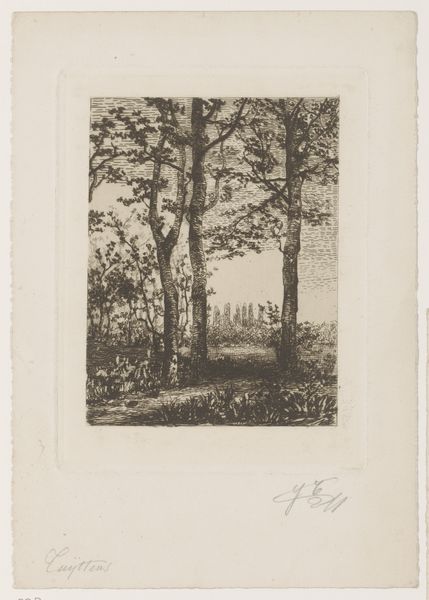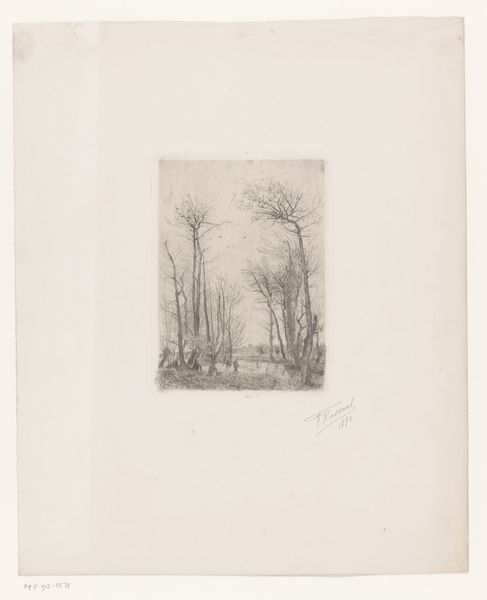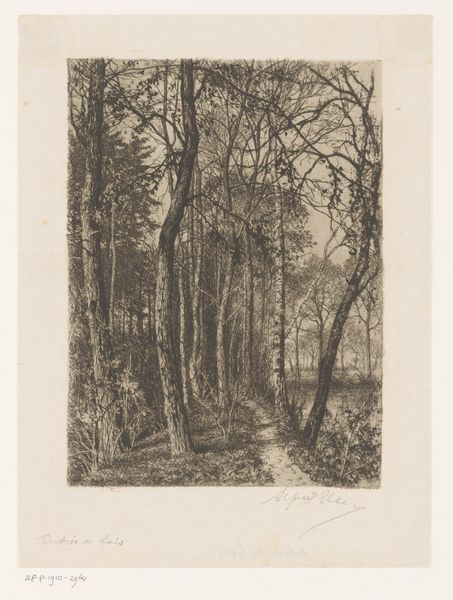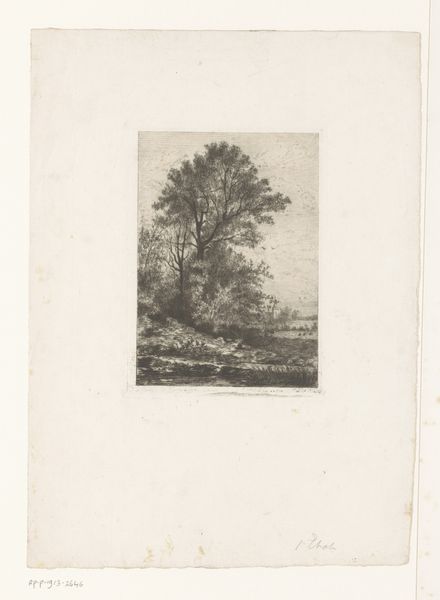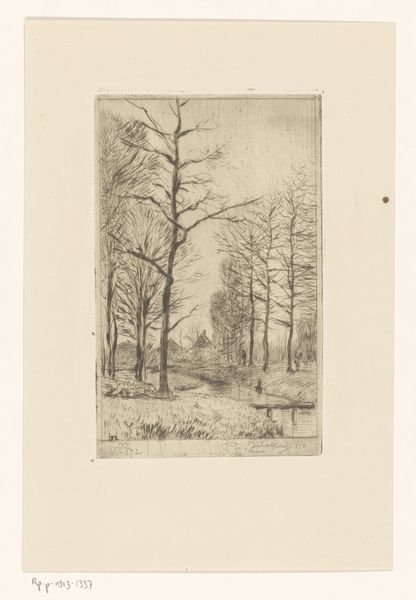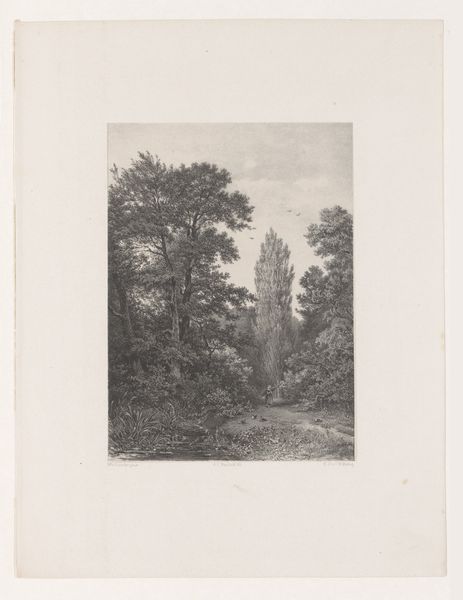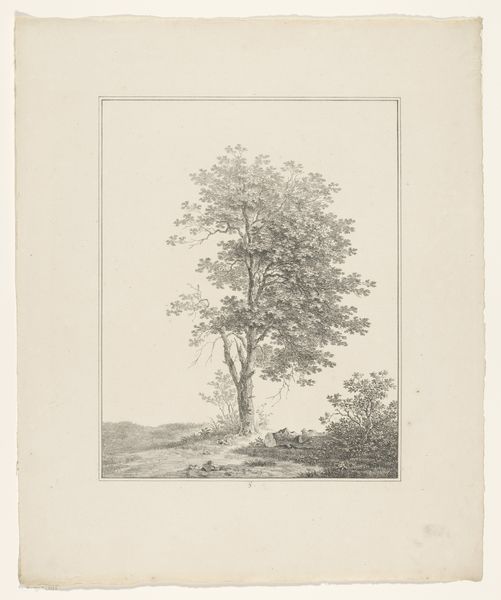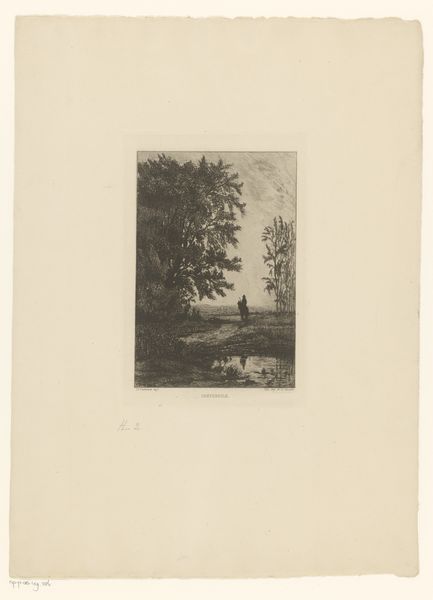
drawing, print, etching, paper, ink
#
drawing
# print
#
etching
#
pencil sketch
#
old engraving style
#
landscape
#
paper
#
ink
#
forest
#
pen-ink sketch
#
realism
Dimensions: height 276 mm, width 188 mm
Copyright: Rijks Museum: Open Domain
Emile de Baré created this etching, "Groep bomen," sometime in the late 19th century. De Baré, a Belgian artist, captures a cluster of trees with intricate detail. The late 1800s saw significant shifts in artistic focus, particularly concerning the representation of nature. Artists moved away from idealized landscapes, influenced by academic traditions, towards more realistic, immediate depictions. Here, de Baré avoids grandiosity, and instead focuses on the humble, unadorned beauty of the forest. This shift reflected broader social changes, including a growing interest in scientific observation and the natural world. De Baré’s choice of etching, a printmaking technique, allowed for detailed linework that is well-suited to capturing the intricate branches and textures of the trees. The print medium also made art more accessible, aligning with a period of cultural democratization. To understand the full context of this work, it is useful to consult art journals, exhibition reviews, and biographical information on the artist and the artistic circles in which he moved. The true meaning of this artwork lies not just in its visual representation, but in its relation to its social and institutional context.
Comments
No comments
Be the first to comment and join the conversation on the ultimate creative platform.
